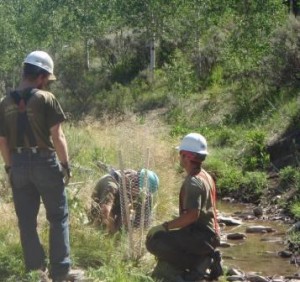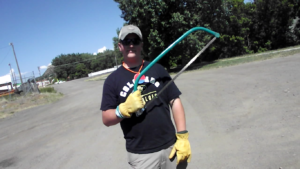A lot of the on-the-ground conservation work done by Trout Unlimited and its chapters involve planting willows or other stream-side vegetation to help the river. But how do plants on the land exactly affect the stream?

Most of the vegetation work done by TU projects involve planting Willow Trees. The reason behind the Willow is that they are a durable plant for fluctuations in their surrounding environment. Willows are able to absorb chemicals that may hurt the water quality, stabilize soil, and grow in saturated areas.
Planting Willows is a big part of the Fraser Flats Habitat project as the willows and other native plants improve bank stability and provide cooling shade along this open meadow stretch of the Fraser River. The shade allows for trout to seek cooler water when flows are lower or air temperature is higher.
Willows are not the only plant commonly used on river banks to help stream quality, the best plants are the native plants. And on the contrary, invasive plants could be the worst. Russian Olives have been being removed by TU and other partners along the stream due to the negative effects they cause.
 At the Colorado TU Youth Camp, campers helped remove Russian Olive Trees from the the banks of the Purgatoire River. Russian Olives deplete the water resource by consuming large amounts of water while also limiting human and animal use of the waterway.
At the Colorado TU Youth Camp, campers helped remove Russian Olive Trees from the the banks of the Purgatoire River. Russian Olives deplete the water resource by consuming large amounts of water while also limiting human and animal use of the waterway.
Native plants work best on streams for obvious reasons as they have been adapted to the environment around them. Plants that don't use a lot of water, but offer shade to the trout and micro-invertebrates allow streams to remain healthy. A lot of native plants are also able to withstand higher flow rates and don't break off into the stream in case of a flood.
Plants are also available to provide a food source for species in the aqautic ecosystem, (as well as the the entire ecosystem). Especially the micro-invertebrates that trout rely on. These bugs find their food source in the riparian zone- the area between the upland zone (the area of the watershed that does not receive regular flooding by a stream) to the aquatic zone, the area of the stream channel covered by water, controlling the flow of water, sediment, nutrients, and organisms between the two.


